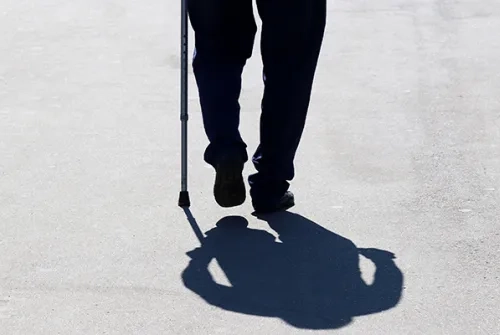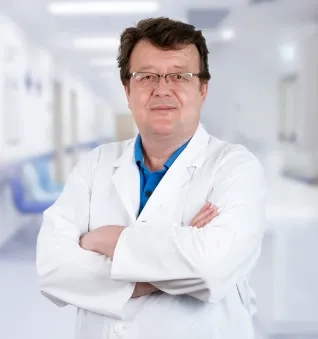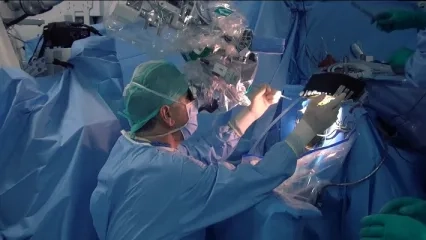Alo Yeditepe
Alo Yeditepe
Beware If Your Walking Distance Is Decreasing!
The narrow canal, which is one of the important spinal problems, progresses and significantly reduces the quality of life if not intervened. Yeditepe University Koşuyolu Hospital Neurosurgery Specialist Prof. Dr. Ahmet Hilmi Kaya said that the gradual decrease in walking distance of a person is one of the most important indicators and that they can achieve very satisfactory results with early intervention.
Our spine is one of the structures of our body that are worn out the earliest by aging. One of the problems that arise in this structure, which is also very important in terms of maintaining our mobility, is narrow canal disease. Saying that this problem, which occurs after the spinal canal narrows especially in the waist and neck regions and causes pressure on the nerves or the spine, manifests itself, especially with aging, Neurosurgery Specialist Prof. Dr. Ahmet Hilmi Kaya stated, “Spinal canal stenosis is a problem characterized by decreased walking distance. Approximately 10-15% of the patient group consists of those with structural canal stenosis.”
Yeditepe University Koşuyolu Hospital Neurosurgery Specialist Prof. Dr. A. Hilmi Kaya said that because the spine is an organ that carries a heavy load, it ages faster than other body tissues, and reminded that narrow canal in the spinal cord, which usually occurs in the middle and advanced ages, can also be seen in young people due to genetic factors. Prof. Dr. A. Hilmi Kaya Kaya stated, “Canal stenosis is not only caused by a hernia and bone structure. The connective tissue surrounding the canal also becomes calcified in time, and gradually begins to narrow the spinal canal. This stenosis causes functional loss over time.”
Beware If Your Walking Distance Is Decreasing!
Prof. Dr. A. Hilmi Kaya, who said that the most important symptom of the narrow canal problem in the spine is the gradual decrease in the patient's walking distance, explained the following about the symptoms: “Complaints such as instability, loss of sensation, motor loss, and muscle weakness occur while walking due to the pressure on the spinal cord. In the narrow canal observed in the waist, the patient feels a decrease in walking distance over time. The patient expresses this very typically, starting to say "I don't like walking". Statements such as ‘It feels like I have a load on both my legs. My toes are getting weaker’ indicates the presence of a narrow canal. The patient has to stop and rest while walking due to numbness in the legs and weakness, especially in the feet. However, the patient's walking distance gradually decreases. He/she needs a rest every 200-300 meters. This point indicates that it is time to intervene in the narrow canal.”
It Is Possible to Reverse the Disease With Early Intervention
Stating that narrow canal disease can be easily diagnosed with an examination, clinical diagnosis, and imaging, Prof. Dr. A. Hilmi Kaya said, “In this case, the main point is early diagnosis and timely intervention. Because with treatment, it is possible to reverse the disease and the condition.” He gave the following information about the modern surgical methods that they use:
“Actually, I can say that we are doing more of a mechanical job. With the help of some special devices, we enter the spine and expand the canal. Depending on the patient's condition, we can perform different surgeries that can range from simple to complex. Sometimes we clean around the nerve by entering from a single region and sometimes multiple regions. In congenital canal stenosis, in some cases, most of the canal is opened. Even if we think that the opened spine will become movable in the future and cause problems, some special screws are used to fix it.”
“Satisfying Results Can Be Obtained”
Emphasizing that if the patient does not have an additional metabolic problem or an additional disease, the result of the treatment can be truly satisfactory, Yeditepe University Koşuyolu Hospital Neurosurgery Specialist Prof. Dr. A. Hilmi Kaya underlined that the public should be made aware of this issue. Saying that the patient starts to enjoy walking and comes back to life after the treatment, Prof. Dr. Kaya said, “Increasing mobility is also very important for the general health of the patient. As the spine expands, many patients will be able to move much more easily.”
This content was prepared by Yeditepe University Hospitals Medical Editorial Board.
”
See Also
- Causes and Treatment Methods of Cervical Herniated Disc
- What is Parkinson's Surgery?
- Brain / Spinal Cord Spine and Nerve Surgery (Neurosurgery)
- Lumbar Spondylolisthesis (Lumbar Slipped Vertebrae)
- Lumbar Spinal Stenosis
- Spinal Fractures
- Narrow Cervical Canal and Myelopathy
- Brain Battery Connecting Parkinson Patients to Life
- Not All Hand Tremors Are Caused by the Parkinson's Disease
- When Does the Spine Require Surgical Treatment?
- Osteoporotic Spinal Fractures Can Cause Bigger Problems If Not Treated Early
- Patient Selection is Important in Parkinson's Surgery
- Canal Narrowing in the Spinal Cord
Alo Yeditepe



